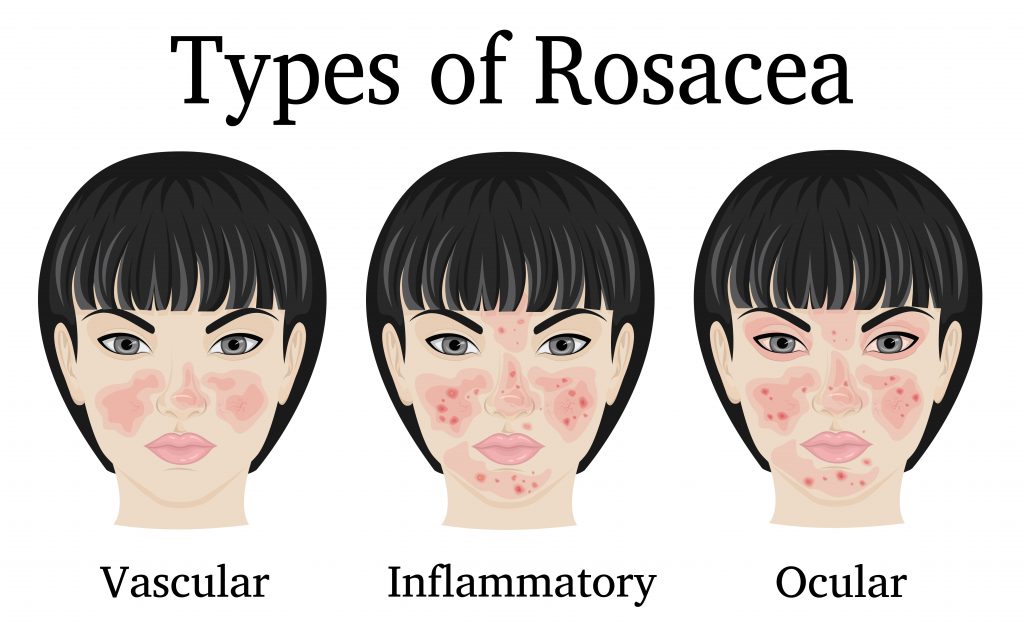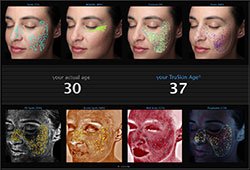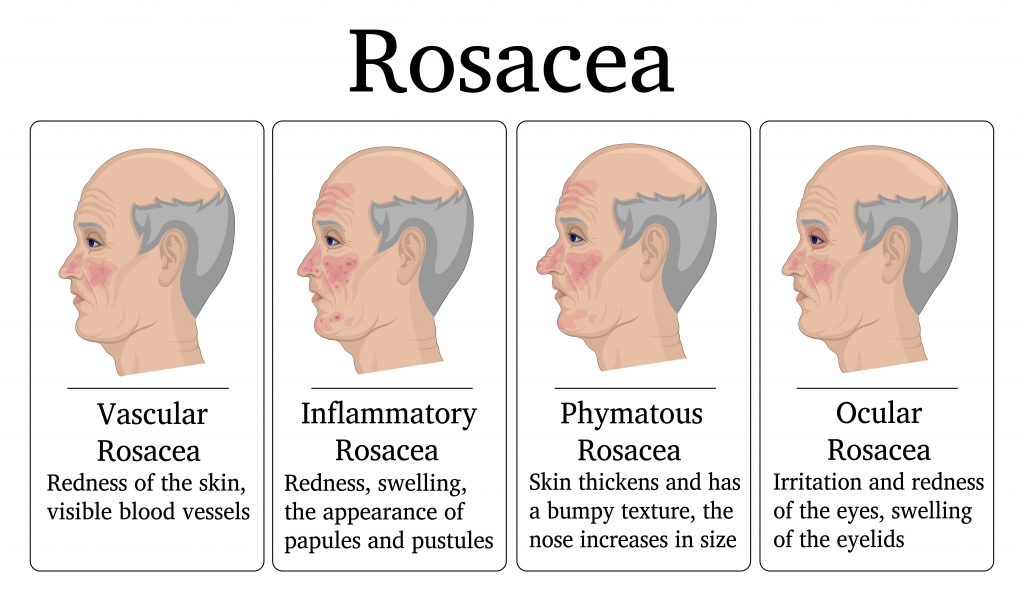Rosacea: Why is the Skin on My Face So Red?
 Rosacea is a common chronic skin condition that primarily targets the face. Rosacea is characterized by facial flushing, persistent redness, papules, pustules, and tiny visible red blood vessels, also known as telangiectasia. Rosacea often starts on the nose, cheeks, and chin, but it can travel to the ears, back, and chest. In some rare cases rosacea may also affect the eyes.
Rosacea is a common chronic skin condition that primarily targets the face. Rosacea is characterized by facial flushing, persistent redness, papules, pustules, and tiny visible red blood vessels, also known as telangiectasia. Rosacea often starts on the nose, cheeks, and chin, but it can travel to the ears, back, and chest. In some rare cases rosacea may also affect the eyes.
Rosacea’s symptoms can be intermittent or last for a few weeks or months at a time. Rosacea can flare-up if the person is exposed to certain external triggers. These triggers can vary from person to person. For a more comprehensive list of triggers see below.
Rosacea most often appears between the ages of 30 to 50. It is more common for women to be diagnosed with Rosacea, but men tend to have more severe symptoms. Although anyone can get rosacea, it is more common for people of fair skin who blush easily to be diagnosed with it. It is estimated that around 14 million people have rosacea in the United States alone. The cause of rosacea is unknown.
People with Rosacea state that the condition of their skin also affects their overall sociability and confidence. Rosacea’s visual appearance contributes to feelings low self-esteem, depression, and anxiety.
As a note of interest, the classic movie actor W.C. Fields had rosacea, which caused his iconic thickened nose.
Symptoms of Rosacea
The presentation of Rosacea can vary greatly from person to person. Some of the more common presentations (symptoms) include:
Redness or flushed face
Swollen nose, ears, chin
Oily Skin
Spider, veins which are visible blood vessels, also known medically as telangiectasia
Sensitive skin
Stinging or burning skin
Bumpy or rough skin texture
Thickened skin (Which most commonly presents on the nose, but can appear on the cheeks, chin, forehead, and ears)
Bloodshot eyes
Eye irritation
Light sensitivity
Blurred vision
What Can Trigger My Rosacea to Flare-up?
Rosacea can flare-up with exposure to certain stimuli, this is what is referred to as a trigger. Triggers can vary from person to person, some of the more common triggers include: 1, 2
Sun Exposure
Spicy Foods
Alcohol
Hot Beverages
Stress
Excessive Heat or Cold
Strenuous Exercise
Cosmetics Containing Alcohol or Witch Hazel
1 Wilkins, D. J. (2018) Factors That May Trigger Rosacea Flare-Ups
Retrieved from www.rosacea.org: https://www.rosacea.org/patients/materials/triggers.php
2 Triggers Could be Causing Your Rosacea Flare-ups. (n.d.)
Retrieved from https://www.aad.org: https://www.aad.org/public/diseases/acne-and-rosacea/rosacea/triggers-could-be-causing-your-rosacea-flare-ups
Epiphany Dermatology’s Treatments Available for Rosacea
 VISIA Skin Analysis
VISIA Skin Analysis
One of the first steps we recommend for our clientele with rosacea is a Visia Skin Analysis. We scan our client’s skin and cater their skin care regimen to suit their individual needs.
 Skin Care Products
Skin Care Products
Epiphany Dermatology can recommend a variety of products that are gentle on the skin and help treat you your rosacea.
For more information about how to treat your Rosacea, please contact Epiphany Dermatology
Our Riverside Location:
805 NW Platte Rd., Suite 120
Riverside, MO 64150 | CLICK HERE for Directions
Phone: (816) 205-8120
SEND US AN E-MAIL
Our St. Joseph Location:
805 N 36th St., Suite D
St. Joseph, MO 64506 | CLICK HERE for Directions
Phone: (816) 205-8120
SEND US AN E-MAIL


